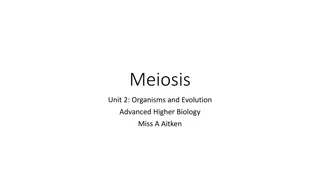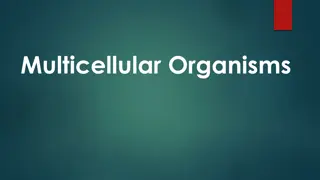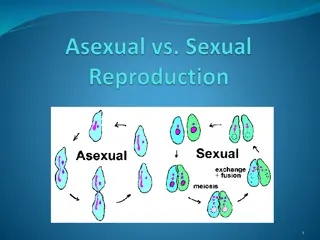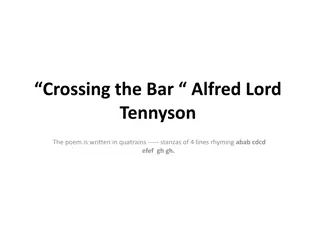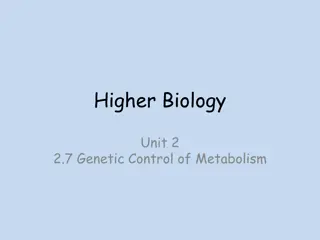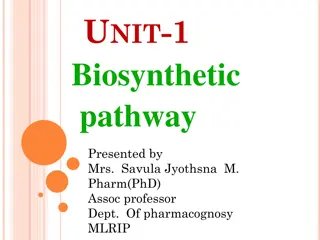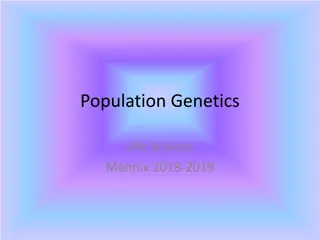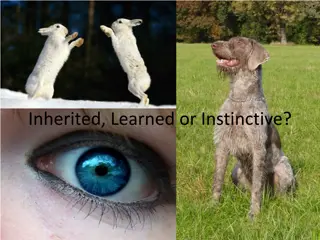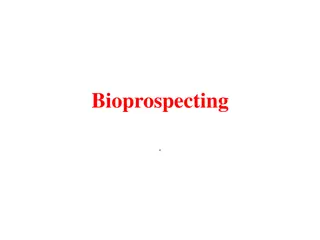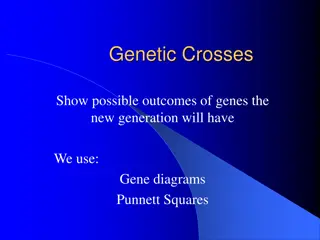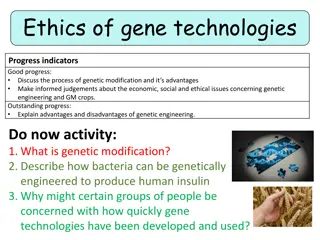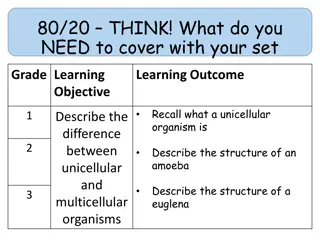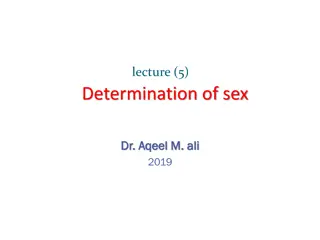Genetic Linkage and Crossing Over Problems in Various Organisms
This content presents genetic problems on linkage and crossing over in different organisms such as corn, tomato, Drosophila, and rabbits. It describes the traits involved, crosses performed, and results obtained to calculate crossing over frequencies and distances between linked genes. The examples cover gene pairs related to grain color, leaf shape, fruit type, body color, and hair characteristics. Various test crosses and their outcomes are discussed to determine if genes are linked and to calculate linkage percentages.
Download Presentation

Please find below an Image/Link to download the presentation.
The content on the website is provided AS IS for your information and personal use only. It may not be sold, licensed, or shared on other websites without obtaining consent from the author. Download presentation by click this link. If you encounter any issues during the download, it is possible that the publisher has removed the file from their server.
E N D
Presentation Transcript
Practical - 7 & 8 Genetic problems on Linkage and Crossing over 1. In Corn, there is dominant gene C for coloured grain and another dominant gene S for full grains. The recessive allele of genes produce colourless (c) and shrunken (s). The plants homozygous for colored, full grained are crossed with colourless, shrunken grained one. A test cross of F1 gave following results: a) Calculate the crossing over frequency between genes C & S. b) What is the distance between the gene C and S? Coloured Full = 190, Coloured shrunken = 07 Colourless Full = 05 Colourless Shrunken= 198
2. The following pair of genes are linked on chromosome No. two of tomato gene C produces Curled leaves, c produces normal leaves. Gene B produces beakless fruits b produces beaked fruits. Test cross of F1 to double heterozygous curled leaved, beakless plants yields a) What is the crossing over frequency? b) What is distance between two genes C & B? Solution: given, Curled leaves, beakless fruits = 77 Curled leaves, beaked fruits = 23 Normal leaves, beakless fruits = 23 Normal leaves, beaked fruits = 77 Gene for curled leaves = C Gene for beakless fruits= B Gene for normal leaves= c Gene for beaked fruits =s
3. In tomato round fruit shape (O) is dominant over elongated (0) and smooth fruit skin (S) is dominant over peach fruit skin (s). Test cross of F1 individuals heterozygous of these pairs of alleles gave following results: Calculate the crossing over frequency. Solution: given, Round smooth = 12 Round peach = 133 Elongated smooth = 123, Elongated peach = 12 , Gene for Round shape= C Gene for Smooth skin = S Gene for Elongated shape = c Gene for Peach skin =s
4. In Drosophila the mutant vestigial (v) has much reduced wings as compare to long wing (V) of the wild types and black body (b) is recessive to normal grey body (B). A fully heterozygous grey bodied, long winged female is matted with black bodied, vestigial winged male fly. The offspring are as follows. percentage of linkage? Are the genes B & V linked? If yes, what is Grey Long = 126, Grey vestigial = 24 Black Long = 26 Black vestigial = 126
5. In rabbits, black & short hairs are due to dominant gene B & L. The recessive alleles b & l produce brown and long hairs. When we make homozygous black, short haired rabbits with brown, long haired rabbits & test cross the offspring. We obtain following results. Are the genes B & L linked? If yes, what is percentage of crossing over? Solution: given, Black, short = 29, Black long 35 Brown long = 33, Brown short =27 Gene for Black hairs = B Gene for Short hairs= L Gene for Brown hairs = b Gene for Long hairs =l
6. In a Rabbit, two recessive genes produce solid body colour (s) and long hair (l) respectively in contrast to a spotted body colour (S) and short hair (L) which results from the dominant alleles. The result obtained from a cross between heterozygous spotted and short haired rabbit and solid long haired rabbit are as follows. a) Calculate the crossover frequency. b) Calculate the distance between the genes S and L. Solution: given, Spotted short 48 Spotted long 05 Solid long 40 Solid short 07. Gene for spotted body colour = S Gene for Short hairs= L Gene for solid body colour = s Gene for Long hairs =l
7. In Drosophila, curly wings- c and spineless bristles s are autosomal homozygous recessive characters. The genes giving rise to these characters are both located in chromosome no. 3. Starting with a wild type male- straight wings (C) and spiny Bristles (S) and the female with curly wings (c) and spineless bristles (s), the test cross of F1 produces following individuals. a) What is the crossover frequency? b) What is the distance between the two genes? Straight wings and spiny bristles (CS) 292, Curly wings and spineless bristles - (cs) 290 Straight wings and spineless bristles (Cs) 09, Curly wings and spiny bristles (cS) 07
7. In Drosophila, curly wings- c and spineless bristles s are autosomal homozygous recessive characters. The genes giving rise to these characters are both located in chromosome no. 3. Starting with a wild type male- straight wings (C) and spiny Bristles (S) and the female with curly wings (c) and spineless bristles (s), the test cross of F1 produces following individuals. a) What is the crossover frequency? b) What is the distance between the two genes? Straight wings and spiny bristles (CS) 292, Curly wings and spineless bristles - (cs) 290 Straight wings and spineless bristles (Cs) 09, Curly wings and spiny bristles (cS) 07

















